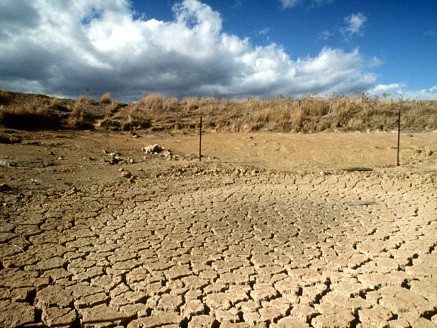
 In a new and particularly foreboding report, the United Nations’ Convention on Biological Diversity warns that using geoengineering to combat global warming should be considered a “highly uncertain” prospect, one whose future impact on the planet’s biodiversity is still unclear.
In a new and particularly foreboding report, the United Nations’ Convention on Biological Diversity warns that using geoengineering to combat global warming should be considered a “highly uncertain” prospect, one whose future impact on the planet’s biodiversity is still unclear.
Yet at the same time, the organization insists that in order to rein in climate change and save the planet from climate disaster, humanity will likely be forced to employ geoengineering methods on a wide scale.
“The effectiveness and viability of the [geoengineering] techniques are uncertain, for a wide range of reasons,” reads the report, which aims to gauge the potential effects of geoengineering on the planet’s biodiversity. “And in reducing the scale of one problem, other new problems would be created. Thus, there would also be risk of the geoengineering action also contributing to other drivers affecting biodiversity loss and ecosystem integrity.”
Geoengineering is defined as the deliberate attempt to influence the planet’s climatic system –in this case, so as to stave off global warming. Scores of approaches have already been proposed, which generally break down into two approaches, aimed at either removing greenhouse gases from the air (carbon dioxide removal or CDR) or reflecting back into space a portion of the Sun’s radiation (called sunlight reflection methods or SRM).
CDR approaches being considered include adding iron to the oceans so as to create more phytoplankton to absorb carbon dioxide from the atmosphere and sequestering carbon dioxide in the soil in the form of biochar. Other CDR approaches take a more natural slant, such as reforestation, which counts on the carbon-sinking power of forests such as the boreal forest which stretches across Canada and Russia.
On the SRM side, proposals are being tested for shooting sulfur dioxide into the atmosphere to reflect more of the Sun’s radiation, spraying sea water into the sky so as to make clouds brighter and more reflective and even putting up a giant space umbrella (or many smaller shading disks) in the upper atmosphere so as to block out some of the Sun.
The Convention on Biodiversity report argues that the time for focusing just on reducing our output of carbon dioxide has for the most part passed, meaning that some type of geoengineering, likely CDR in a number of formats, will be needed in order to keep the planet from overheating.
Indeed, scientists say that already there is too much carbon dioxide in the atmosphere, and the International Panel on Climate Change’s (IPCC) own recommendations call for “negative emissions,” another term for carbon dioxide removal, in order to reach the goal of keeping global warming below two degrees Celsius.
Lead author of the report and scientist with the Natural Environment Research Council in the United Kingdom, Dr. Phillip Williamson has stated that the science behind geoengineering has not been proven and for that reason, he remains uncertain about its promise. “I’m sceptical. That’s not to say bio-energy with carbon capture and storage is impossible, but it seems extremely unlikely to be feasible for all sorts of reasons [at the scale needed],” says Williamson in conversation with the Climate News Network.
Opened for signature at the Earth Summit in Rio de Janeiro in 1992, the Convention on Biological Diversity is an international treaty focusing on sustainability issues and the conservation of Earth’s biodiversity.
Comment
Leave a Reply
You must be logged in to post a comment.




 Share
Share Tweet
Tweet Share
Share




Stop spraying us you fiends.
You nailed it Jamie!! I am tired of dark skies and planes, the spraying has to stop NOW!!
Nobody sprays you.
Nobody sprays anything. Don’t be a chemtrail believer. It’s stupid.
https://www.youtube.com/watch?v=jf0khstYDLA
Don’t get me started with that bs.